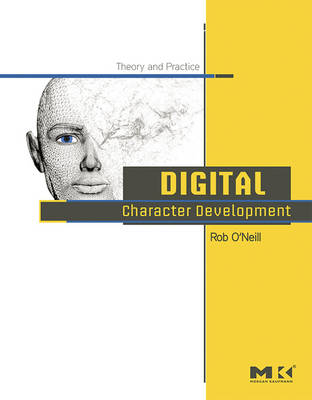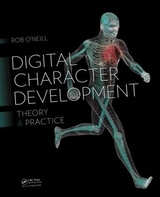
Digital Character Development
Focal Press US (Verlag)
978-0-12-372561-5 (ISBN)
- Titel erscheint in neuer Auflage
- Artikel merken
Digital character development consumes a large percentage of the development time of every animated film or video, and is widely viewed as the next major area of advance in computer games. This field now spans the areas of cognition, anatomy, animation, computer graphics, theater, and psychology. While advanced techniques are reported in scholarly journals and academic dissertations, only those that find an implementation in off-the-shelf software (such as Maya) are covered in books. Digital Character Development: Theory and Practice covers the foundational algorithms and research that go into the development of virtual characters. The author, a faculty member of the Pratt Institute and Parsons School of Design, as well as studio technical director of Eyebeam Art and Technology Center in New York, was technical director at PDI/Dreamworks on Shrek 2 and Madagascar and is an independent filmmaker and artist. His new textbook guides both students and professionals who need a thorough understanding of character development in order to make decisions about the creation of their own characters. This text bridges the gap between algorithm and software-agnostic applications. The book will include exercises. The manuscript will be class tested at Pratt Institute, Parsons School of Design, and others.
Part I: Introduction; 1. Overview; What defines a digital character; The "Uncanny Valley"; How does style dictate setup?; 2. History; Overview of digital characters in film; Video games; Multimedia; 3. Introduction; Nomenclature; Joint rotations; Geometry mesh surface types; 4. Motion Systems; Anatomy; Joint mechanics; Joint placement; Joint hierarchies; Constraints and high level control; User interface; 5. Deformation Systems; Deformation order; Basic deformations: skinning; Shape interpolation; Layering deformation methods; Joint-free deformations; 6. Face Setup; Anatomy; Frameworks for effective face rigging; Mixing deformation methods; Secondary motion for realism; Psychology behind facial expressions; Part III: Animation Technology; 7. "Traditional" Techniques; Forward kinematics; Inverse kinematics; 8. Motion Capture; Marker-based motion capture; Marker-less motion capture; 9. Procedural Animation; Artificial intelligence; 10. Multi-Character Systems; Crowds; Behavioral animation; Path-finding and decision making; Part IV: Conclusions; 11. The Future of Digital Characters; 12. Character Interactivity
| Erscheint lt. Verlag | 25.11.2008 |
|---|---|
| Verlagsort | Burlington |
| Sprache | englisch |
| Maße | 189 x 246 mm |
| Gewicht | 1111 g |
| Themenwelt | Mathematik / Informatik ► Informatik ► Grafik / Design |
| ISBN-10 | 0-12-372561-5 / 0123725615 |
| ISBN-13 | 978-0-12-372561-5 / 9780123725615 |
| Zustand | Neuware |
| Informationen gemäß Produktsicherheitsverordnung (GPSR) | |
| Haben Sie eine Frage zum Produkt? |
aus dem Bereich



